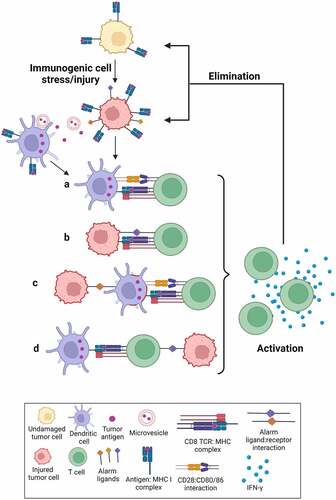Figures & data
Figure 1. Immunogenic cell stress/injury stimulates an anti-tumor immune response.
Following stress and injury, including chemotherapy-induced DNA damage, antigens from the tumor cells are either released from the cells or displayed on the surface at higher levels, together with stress-activated ligands. In the conventional model (a), DCs cross-present these antigens on MHC-I to prime and activate CD8+ T-cells. A minor but substantial fraction of CD8+ T-cell priming, however, occurs through direct tumor cell:T-cell contact following stress and damage (b). Finally, our observation that only live stressed/injured cells were capable of driving DC-mediated T-cell priming indicates that antigen delivery to, and/or stimulation of DCs involves direct tumor cell:DC contact (c), and even allows the possibility of a 3-way interaction between the tumor cells, DCs, and T-cells (d). Figure created with BioRender.com.

